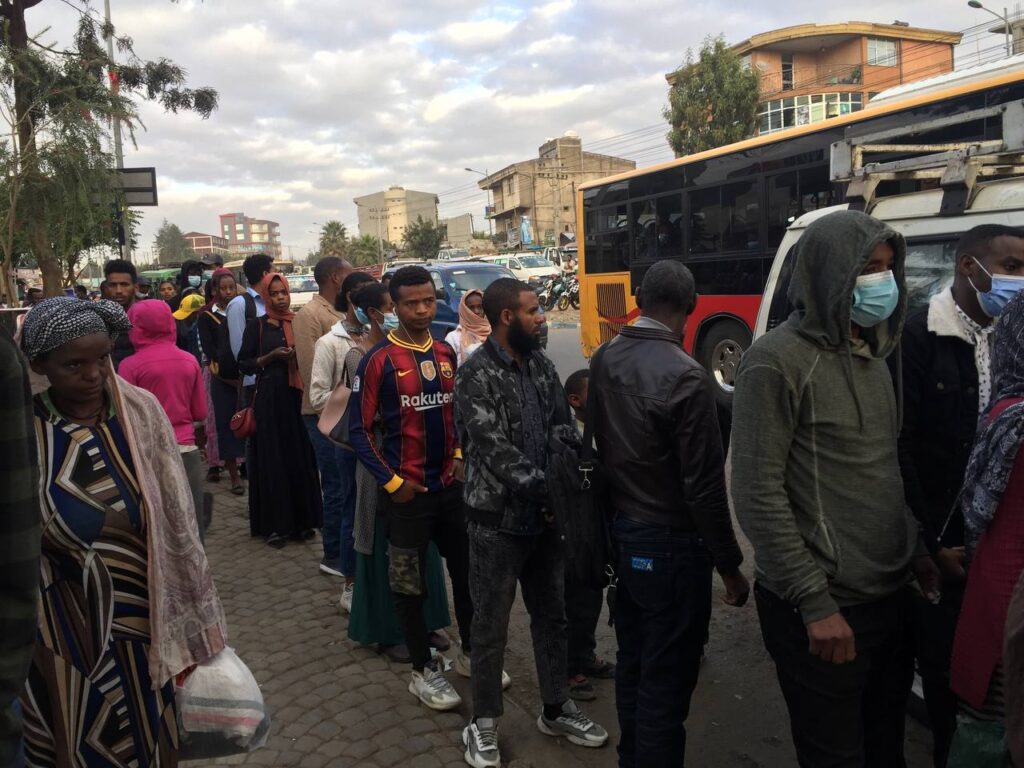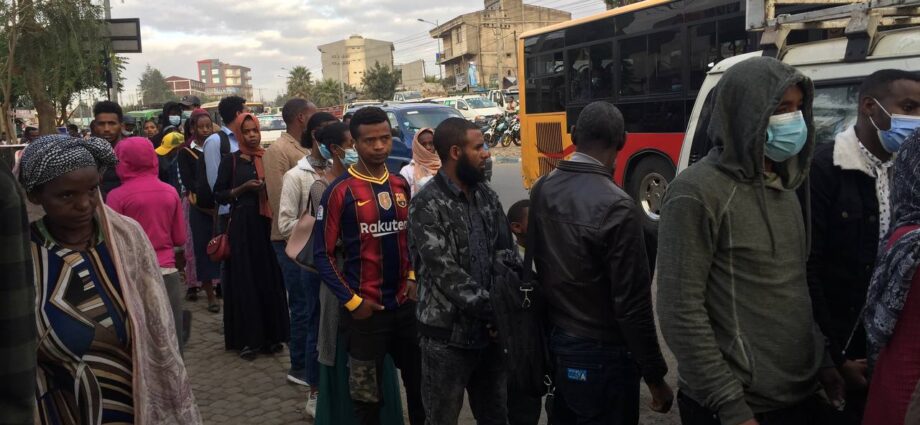by Addis Ababa Correspondent Medhanit Ayele
Beyond the spatial impact such long queues have on the pedestrian space – engulfing the walkable space – the lack of sufficient public transportation also highly affects the number of people who would have the choice to walk in the city if there was secured sufficient public transport to get home later after a pleasurable time in the city center.
-Medhanit Ayele
Walking in Addis Ababa is fairly better along the primary roads of the city, considered to be the downtown arteries. However, even walking the sidewalks of these districts pose challenges for pedestrians due to the lack of proper pedestrian space design, pavement finish, street lighting, and the presence of manholes and construction site deposits. These come in mind when we think of the physical infrastructure; however, social challenges such as safety, catcalling, proper sitting areas, and accessibility for the physically impaired are also major challenges posed for pedestrians.
In 2019, the ratio of cars to people in the country, of Ethiopia, was 2 cars to 1,000, people making it one of the lowest rates of car ownership in the world. As a result, Addis Ababa has one of the lowest numbers of private car ownership, even when compared to other African capital cities. This might be a perk for the developing city if the city government makes conscious investments toward better mobility infrastructure in the city.
Walking along the streets of Addis Ababa, it is hardly possible to miss the long queues of people waiting for public transport. This gets even more critical during the rush hours of the day when people get out of their workplaces and schools. At such hours, the pedestrian space is the primary space where these long queues for taxis, buses, and even for shared rides take place. This highly affects the use and experience of sidewalks for anyone walking whether for pleasure or short-distance destinations.
Beyond the spatial impact such long queues have on the pedestrian space – engulfing the walkable space – the lack of sufficient public transportation also highly affects the number of people who would have the choice to walk in the city if there was secured sufficient public transport to get home later after a pleasurable time in the city center.

In 2019, the ratio of cars to people in the country, of Ethiopia, was 2 cars to 1,000, people making it one of the lowest rates of car ownership in the world. As a result, Addis Ababa has one of the lowest numbers of private car ownership, even when compared to other African capital cities. This might be a perk for the developing city if the city government makes conscious investments toward better mobility infrastructure in the city.
Medhanit Ayele
As the public transportation fails to accommodate the majority of the pedestrian city residents, it raises accessibility issues as it highly affects one’s activity within the city center. Currently, unless one owns a private vehicle, or is willing to pay expensive prices for private mobility service provider companies, his or her experience of the city is limited to only half of the day – forced to wait through long queues to get home safe and within the one’s economic limits.
Walking for pleasure requires time, safety, willingness and proper infrastructure. Even though the majority of residents of the city of Addis Ababa are pedestrians, I doubt that many can experience the pleasure of walking which comes from a conscious willingness and decision to walk. Most of the city seems to be filled with pedestrians, yes, but a great many are forced to walk either due to insufficient services of the public transport system or for shorter destinations in mind.

Medhanit is an urban enthusiast and soon to be architecture graduate who engages herself in diverse urban topics, focusing her work on the public spaces in our cities. She has worked on both data-driven analysis and writing content to bring forth a better understanding of the cities we live in.
Learn more about the Global Walkability Correspondents Network here

